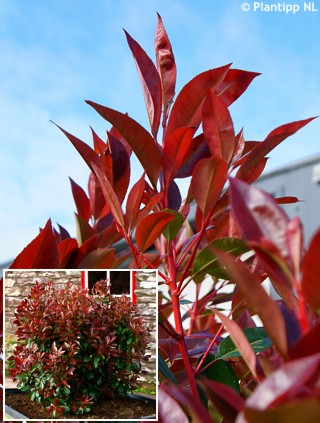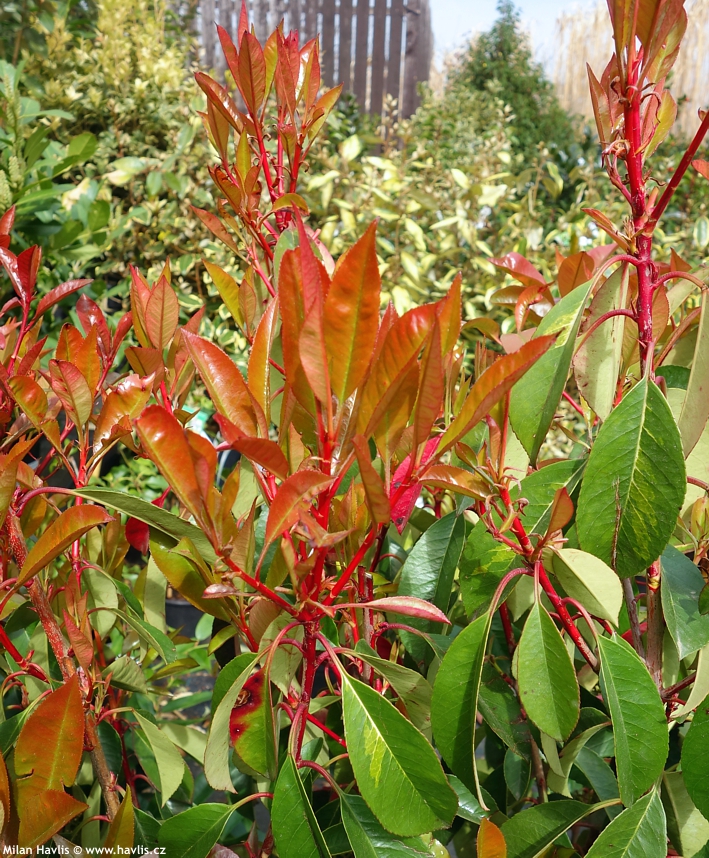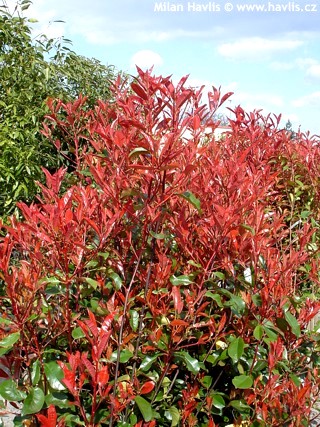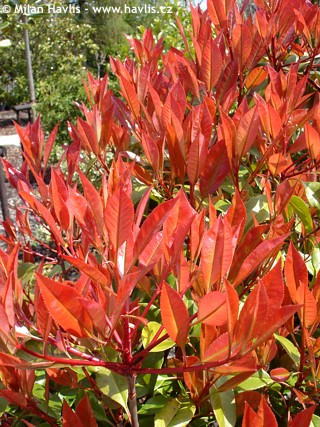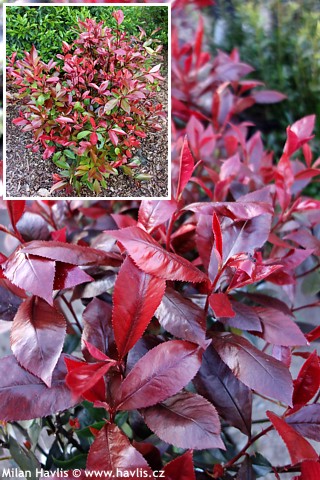Photinia x fraseri 'Oploo1' RED LIGHT Fraser's photinia
size/type
taller shrub,taller shrub
usual height
1,5-2,5m
usual width
1,5-2m
leaves
evergreen broadleaf
colour of leaves
flowers
less showy but noticeable
colour of flowers
blooming time
April
location
full to partial sun
soil type
acidic (peaty) to neutral
soil moisture requirements
evenly moist (dislikes drought)
USDA zone (lowest)
7 (down to -23°C)
winter protection
for zone 5+6

for zone 7

categorized
Photinia
Fraser’s photinia is a popular shrub in countries and regions with milder winters. It is a hybrid between photinia glabra and photinia serratifolia. Red Robin was the first variety that came from this crossing, and after it proved huge commercial success, new selections have been introduced.Description of the plant:
RED LIGHT is a Dutch selection of popular photinia from 2013, bred and introduced by Alexander van Oploo, EU patent 32555. It has distinctively different colour of new twigs - they are bright red (as opposed to common wine red), and perfectly complement deep burgundy red colour of newly emerging leaves. They are evergreen, broadly oval, and come out at least twice a year: in early spring and in late summer, and you can bring the second phase forward by pruning the shrub in early summer just as the new leaves turn green. Mature plants produce 8-10 cm large cymes of creamy white flowers in mid spring.It grows fast forming a dense and bushy, fat shrub that is perfect for hedges or makes a great combination plant among dark green conifers. As it is quite an unusual plant it is also often used in rather exotic landscapes where its lush and glossy, coloured foliage brings a feeling of a coloured rainforest.
Photinia needs moist but well-drained, humus-rich soil and mulching. Acid soil will provide richer foliage colour but for healthy growth it is not essential. It can be pruned in any way from early spring until midsummer. Young plants need extra watering in hot and dry summers, while well-established plants proved to be quite drought-tolerant. Provide extra watering in frost-free periods in the winter if the ground is not frozen. It is quite hardy (abt. -24°C - USDA zone 6) yet we recommend finding it a place sheltered from strong, drying winds in winters of zone 6. When it suffers from frost it quickly regenerates after back-pruning.
Last update 08-03-2018
QUICK PRICE OVERVIEW
CURRENTLY SOLD OUT
WANT TO TRY A SIMILAR PLANT?












